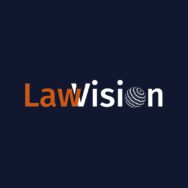By Joe Altonji, Mike Short, Mark Medice and Yvonne Nath
In our COVID-19 Recovery Playbook, we provided our thinking for firm leadership on how to manage through the current crisis. In this four-part continuation of that work, we examine where and how the industry may be shaped by the current health crisis facing the world. In Part 1, we present some thoughts on the types of trends and changes that the crisis has the potential to create in society, and by extension, the legal profession. In Part 2, we look at how client demands might change in light of this pandemic. In Part 3, we look at how these trends might affect the commercial law firm platform. Finally, in Part 4 we discuss how any firm might better prepare itself to weather future “Black Swan” events while coming out the back end in a healthier and better economic position.
Over the last few decades, the legal profession has gone through a number of crisis points, from the dot-com crash, to 9-11, to the Great Recession and now COVID-19. We’ve survived all of them, and will survive this one too, but it’s fair to say that whenever these events transpire, the response from the legal industry has been reactionary, generally dramatic and often painful – particularly at the onset. To borrow a variation on an old phrase that’s been resurrected recently, we’ve often flirted with the cure being worse than the disease. Yes, the short-term solutions work, but misperceptions about the long-term effects of the changes combined with a very strong preference for the status quo by influential Partners have often hindered firms from achieving new successes coming out of the events.
We hope that firms will take a systematically different approach coming out of this crisis, with the goal of putting the firm in a position to easily manage through a crisis while minimizing the damage and using the crisis as a springboard to a stronger strategic position than the one it had going into the crisis. To do that, most firms will have to rethink how they lead and manage and think through their strategic positioning – none of which is aligned with the status quo.
What if “Black Swans” Become the “New Normal”?
We know that COVID-19 is not the first global pandemic,[1] but it is the first pandemic that has played out on the world political stage, with massive government intervention in societal behaviors and the economy, and in full view of modern, all-pervasive media. If we can be forgiven the pun, it might be said that this is the first pandemic to “go viral,” consuming the attention of everyone, everywhere, in media-connected societies, particularly in the US. It has already cost trillions in the US alone, with an escalating societal economic cost likely to ultimately reach into the tens of trillions of dollars. It has had impacts on everyone – economic for most, health related for some (so far), and cultural for all.
Will it be the last? This seems unlikely, and having set the precedent for massive intervention in society, we can expect that future pandemics with similar or more dire medical implications will receive similar reactions, if only because politicians having once responded with an “all in” strategy will risk severe political repercussions if they fail to do the same the next time circumstances warrant.
“Black Swans” are not limited to medical events, and we have seen numerous events labeled as such over the past few decades.[2] It is clear that we live in a world where Black Swans have become an unwelcome part of life although, thankfully, not all have societal implications and effects as severe as this pandemic, or the attacks of 9/11. Nevertheless, it could be argued that preparing for Black Swans should be the norm, not the exception, even though by definition an individual Black Swan is “unpredictable.” Clearly, the fact that they will periodically arrive is predictable, and should be factored into business thinking, including in law. If law firms were to plan for Black Swan events to occur (even in the absence of predicting the specific nature of each one), what might that look like?
The most profound change needed would be designed resilience, the ability to recover quickly from and respond positively to difficulties and challenging conditions and take advantage of them to position themselves going forward. Currently, we can safely say that while some firms have a greater degree of resilience than others, the industry as a whole would probably get a mixed grade. The industry has survived (and ultimately thrived) after historic, sometimes wrenching Black Swan events, but that does not mean that every firm thrived, or even survived. We anticipate that this event will have similar results – some will thrive, but others will be badly hurt, some will dissolve outright, and others will be forced to merge out of desperation.
Relative to our current position, what might designed resilience mean in the context of the individual law firm? More resilient firms – those best poised to thrive after a Black Swan event, would likely have most or all of the following characteristics:
Economic Resilience:
- Relative to the industry, a greater share of variable than fixed costs that can be rapidly scaled with relatively little pain. This might include:
- Controlling commitments to long-term, expensive space and building flexibility into any real estate commitments.
- Potentially shifting more services to flexible outsourcing arrangements, ultimately including shared service center options for any (and potentially all) support operations.
- More flexible legal staffing models – including greater reliance on lawyer-on-demand possibilities.
- Increased use of hoteling, and remote working capabilities.
- Increased capital base and financial staying power.
- More conservative normal draw or salary models, with greater emphasis on performance/results-based compensation and distribution.
- Greater emphasis on steady revenue streams, including potential moves toward increased annual retainers or subscription-based service delivery (reduced reliance on hourly billing and transactional services).
- Positional redundancy around all critical functions.
Economic Management:
- “Real-time” ability to monitor profitability trends on client and practice levels, cash leakage, client risk, inventory issues.
- Strong, flexible predictive analytic capabilities for areas such as client intake, matter performance against budget or matter outcome.
- Client-oriented pricing capability.
Culture:
- A long(er)-term investment orientation.
- Willingness to cannibalize current business for future positioning.
- Accountable but supportive culture.
- Open and transparent wherever practical.
- High levels of trust.
- Supportive of innovative initiatives.
- Overall Constructive cultural style.
Client Positioning:
- Close, partnering relationships with key clients.
- Careful control/management of overall client base.
- Clear market positioning that clients see, understand and respond to. Not differentiated on price.
Management/Leadership:
- Ability to make significant decisions quickly, based on accurate and up to date information, and with the support of the partnership.
- Strong “finger on the pulse of the firm”. In touch and trusted.
- The right leaders in leadership positions, and the best managers in management positions.
- The next leaders being continually identified and trained.
- Streamlined, limited excess structure, except where needed to build trust.
- Flexible compensation approaches that can be adapted to current needs.
Strategic:
- Clear sense of purpose, vision and strategy.
- Strong, innovation-oriented capability. Internal processes designed to quickly bring new ideas to fruition, test them for appropriateness, adopt and roll them out.
- Deep bench and strong capability around key practices. Supporting practices limited to needed capabilities to support strategic positioning. Not “all things to all clients.”
Many readers of this section will see themselves in many of the features above because, to some degree, many firms have tried to build these firm characteristics. However, each of them should be viewed as a spectrum, and most firms fall well short on their ideal positioning if the goal is maximizing overall firm resiliency. Those who do succeed will be best positioned to rebound quickly from and thrive after future Black Swan events.
How Can the Firm Achieve Greater Strategic Resilience?
While most of what a firm would need to accomplish is captured above, most firms will not achieve that without fundamental changes in approach. As Einstein famously said, “The definition of insanity is to keep on doing the same thing and expecting a different result.” Changing behaviors is difficult, particularly in tradition-focused institutions and absent a crisis. While we are in one right now, it will end or dissipate. The goal should be to come out of this with a commitment to a different approach.). We suggest firms consider initial changes across the following range of processes, which can be revisited and augmented as the firm gain’s traction:
- Strategy: Move strategic processes to an ongoing, standing process with specific responsibilities for horizon scanning and other efforts focused on looking for new challenges and upcoming changes and threats. Regular input from clients focused on trends in their industries and future challenges (not just “service audits”). Focus on bringing in different perspectives and information from unusual sources. Regular mini-strategic updates incorporating input and feedback from a range of stakeholders in the organization, coupled with periodic wholesale rethinking as needed.
- Culture: Active culture assessment and management. Identification of, and training in, social and communications skills for lawyers charged with leadership efforts. Enhanced communications and transparency around cultural/core values and challenges. Build support for accountability, investment and firm-first behaviors.
- Data and Metrics: You can’t manage what you don’t understand. Systematic review of the data utilized to manage the firm, including economic performance and profitability, client management, talent and other areas. Build systems and processes, but simultaneously educate all stakeholders in the value of information and knowledge.
- Management: Rethink management approaches to assure leadership has strong connections to all parts of the firm. Rethink compensation approaches to recognize teamwork and cultural commitment, as well as economic performance, profitability, client connectivity and overall contribution.
- Communications: Address topics and issues forthrightly and honestly. Increase transparency but also education. Build regular internal communications “networks” to assure all stakeholders feel culturally connected to the firm.
- Leadership: Select leaders with clear, future-oriented strategic vision and firm dedication (no exceptions). Communicate vision and build a sense of purpose in the organization.
Firms that go down this path will have varying degrees of success, but we firmly believe that those who do will be far better positioned to thrive in normal times and, when the next crisis comes, emerge from it not just in good economic condition but far better positioned strategically than they were when the crisis began. We look forward to seeing all of you on the other side.
[1] The most severe recorded pandemic of modern times, by any measure was the 1918 Spanish Flu which killed an estimated 50M people globally, and 675K in the US. However, there have been multiple other global pandemics over the past century, including the H2N2 Pandemic in 1957/58 which killed more than 1.1 M worldwide and 116K in the US, or the H3N2 Pandemic of 1968, with similar effects. More recently we’ve experienced SARS, MERS, H1N1 (Swine Flu) and others.
[2] The term “Black Swan” came into popular usage in the wake of the 2008 global financial meltdown but was subsequently applied to earlier events such as the 9/11 attacks and subsequent market crash, among others.



